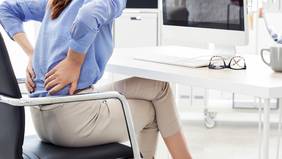Sitting has an image problem
“People who sit longer die sooner” (ZEIT), “This is how harmful sitting is” (Apotheken Umschau),“More and more Germans are sitting too much” (Ärztezeitung) – these are just a few of the headlines currently circulating in the media. To be more specific, sitting for hours at a time is said to promote various illnesses, such as:
- Cardiovascular diseases
- Diabetes
- Cancer
- Alzheimer’s
- Back problems
- Muscular tension
- Headaches
- Concentration problems
To put it another way, sitting seems to be as harmful as smoking a packet of cigarettes without a filter each day. But is that really true? Is it all perhaps a case of unnecessary scaremongering or hype? The latter certainly isn’t true as sitting and physical inertia have long had bad press.
The dose makes the poison
Friedrich Nietzsche summed it up perfectly when he wrote, “He who has always excessively indulged himself, will eventually sicken from this excessive indulgence.” Notably, the philosopher never displayed robust health himself. But he was right. As with everything else, when it comes to sitting, it’s the dose that makes the poison. To put it more bluntly: an ergonomically optimised office chair isn’t going to help you much if your day only involves moving from your bed to your car to your office chair, and back home again to your sofa. People who sit at desks and in front of computers for their work need to balance this out to a certain extent by making sure they move their bodies. And this doesn’t have to mean competitive sports or the like. A good walk with your dog, regular jogging sessions or a bit of strength training can go a long way. But you can help your health by choosing the right office chair to effectively minimise the impact of sitting for hours at a time – “active sitting” is the key here.
What is active sitting and what are its benefits?
“Active sitting” may sound like an oxymoron at first. But it is actually possible as professional 24-hour chairs, such as our Svenstol® model, feature a special mechanism that promotes movement while sitting. What this means is that your sitting position changes regularly and you don’t remain rigidly seated with the same posture all the time. Each position change stimulates your circulation and metabolism, relieves your intervertebral discs and strengthens muscles. Your intervertebral discs and brain also benefit from a better supply of essential nutrients. This promotes concentration and ensures that you remain productive, even after several hours spent sat at your desk. A good 24-hour chair is therefore a genuine investment in your health.
24-hour chairs: the perfect fit for everyday use
Before the chairs can be used to their full advantage, they need to be optimally adjusted to your needs. Everyone is different when it comes to posture, weight and occupational requirements, which is why StolComfort offers tailored advice and the optimal adjustment of the chair to your needs as well as a free trial. You can try the chair for a month, free of charge and without obligation. We are confident that you will soon see active sitting for what it is; a genuine way of contributing to your health and performance.






